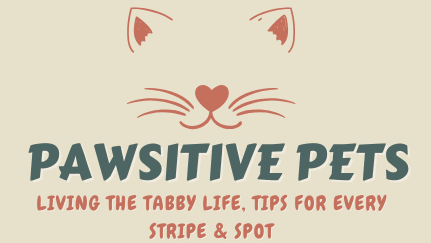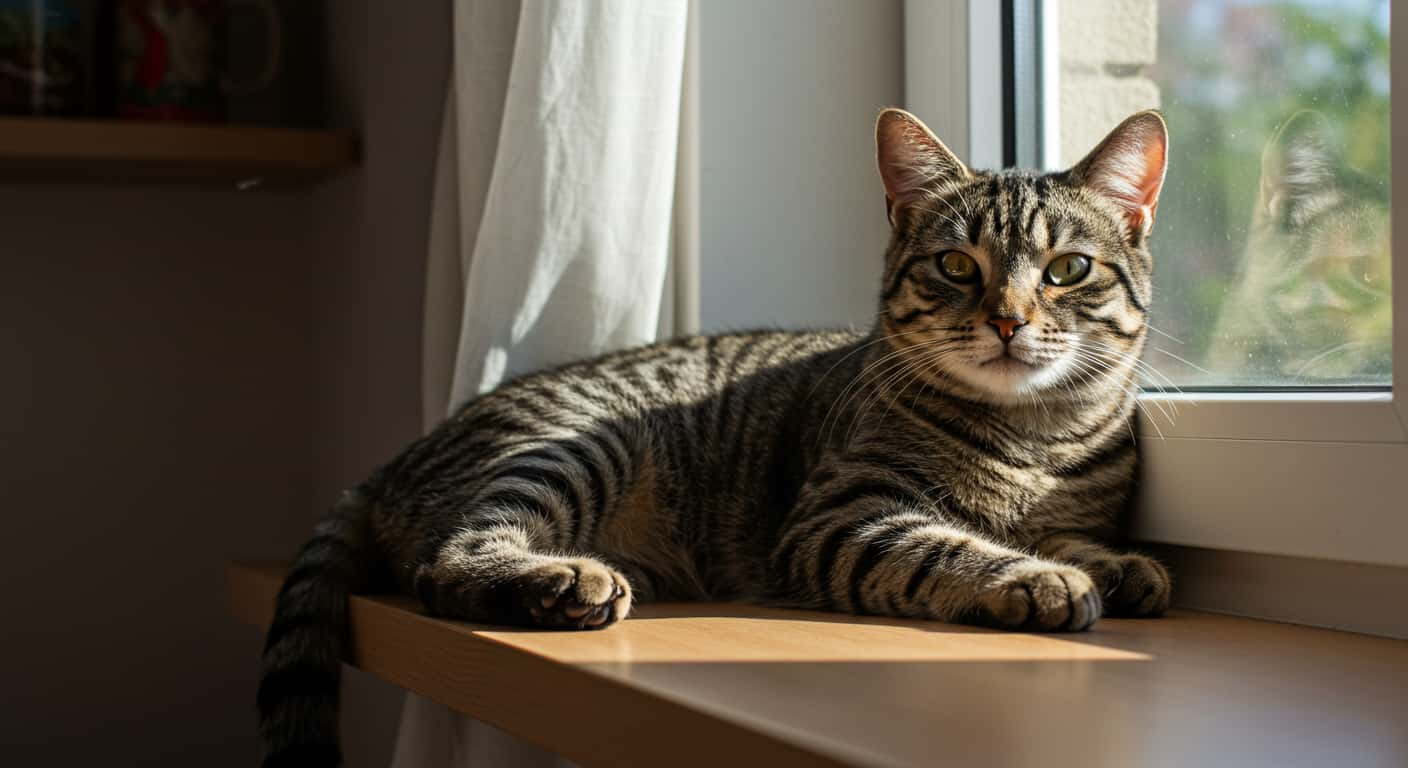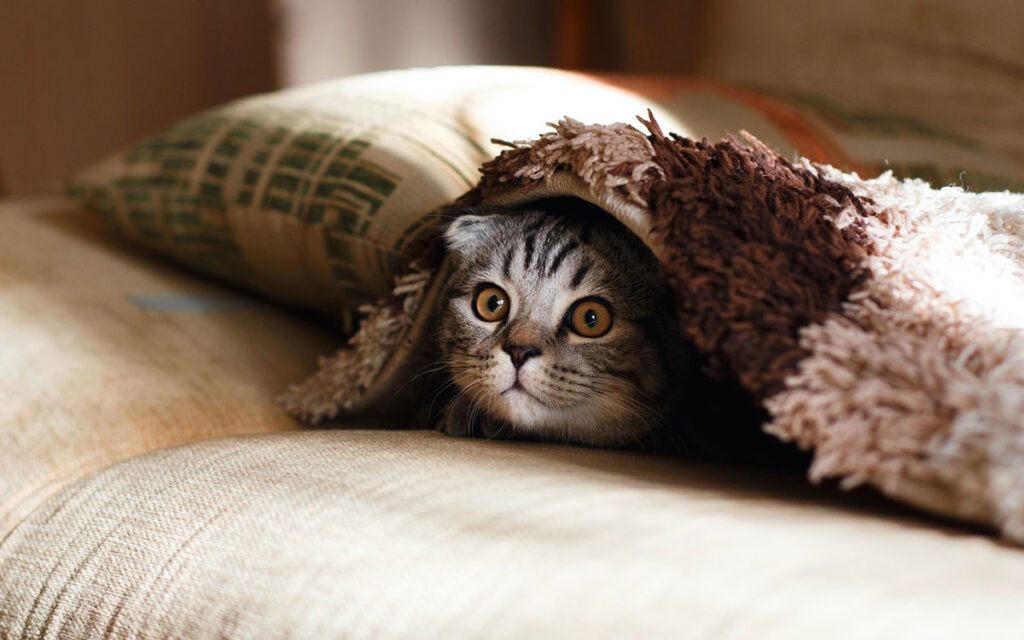Tabby cats have fascinated humans for centuries with their charm, intelligence, and unique patterns. From ancient history to modern-day care tips, this guide covers everything you need to know about life with a tabby. Whether you’re raising a playful orange kitten or adopting a calm gray adult like Luna, a rescue with a bold personality, you’ll find expert advice, helpful insights, and heartwarming stories throughout.
If you’re curious about what makes them tick, check out the full guide to tabby cat personality to discover their most lovable traits.
Table of Contents
Why Tabby Cats Captivate Us
The Allure of Tabby Patterns
Tabby cats are instantly recognizable thanks to their striking coat patterns. From swirling classics to sleek mackerel stripes, each tabby has a unique look. These markings aren’t just beautiful, they trace back to wild ancestors where camouflage helped cats survive in the wild.
A common and charming trait is the “M” shape on the forehead, seen in nearly all tabby cats. This marking has sparked legends, with some saying it stands for “Mau,” the Egyptian word for cat. Others believe it’s a sacred sign, a symbol of protection or even a blessing.
Whether fact or folklore, the natural beauty and mystery of tabby cats continue to turn heads and win hearts.
Their Unique Place in Human History
Tabby cats have been part of human life for thousands of years. Ancient Egyptians revered them for their grace and usefulness, even mummifying tabby-marked cats to honor them. As domesticated cats spread across Europe and Asia, tabby patterns remained dominant.
In medieval times, tabby cats gained even more respect for their rodent-hunting skills. Their help during the Black Plague likely saved lives, and their striped coats made them stand out as symbols of luck or divine favor.
Today, their popularity continues. Whether lounging in sunbeams or chasing toys, tabby cats remain among the most cherished feline companions. Luna, for example, has a silver-striped coat and a curious nature that instantly draws attention, just one more reason people fall in love with tabby cats every day.
The Genetics and History of Tabby Coats
Origins of the Tabby Pattern in Domesticated Cats
Tabby cats have a history that stretches back thousands of years. The tabby pattern is not a result of selective breeding, it’s actually the original wildcat coat design. Early domesticated cats descended from the African wildcat (Felis lybica), which had similar striping and camouflage. These natural markings helped wild cats blend into their surroundings while hunting, offering a survival advantage.
Archaeological findings, including cat mummies and temple paintings in Ancient Egypt, suggest that cats with tabby markings were valued and even worshipped. In Europe and Asia, these coat patterns continued to appear as domesticated cats spread across trade routes. Over time, tabby cats became more than just mousers, they became companions.
❝ In medieval Europe, tabby cats were prized for their stealth and hunting ability, so much so that during the Black Plague, their striped coats and rodent-killing instincts may have helped save lives. ❞
Genetic Markers: What Makes a Cat Tabby?
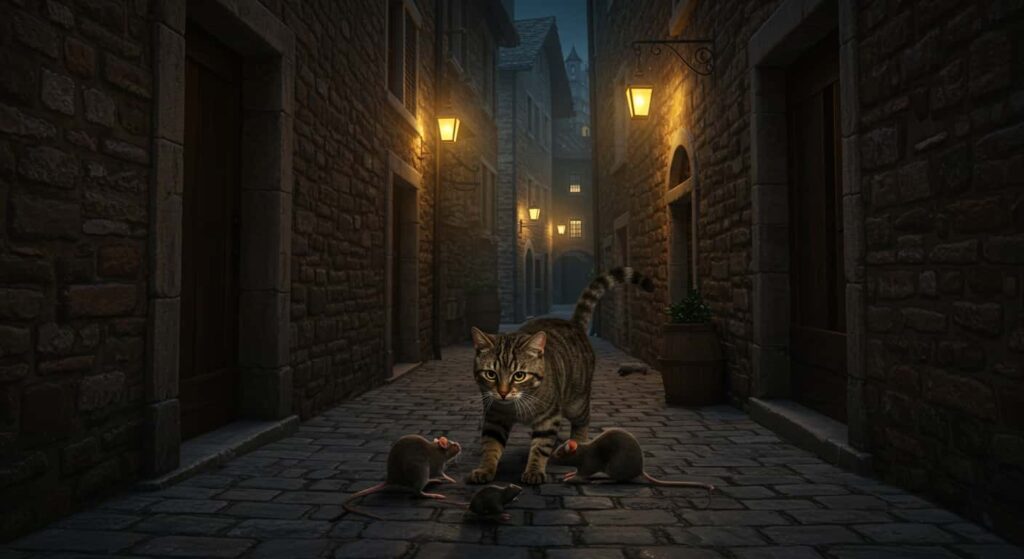
The beautiful patterns that define tabby cats are coded by a combination of genes, with the Agouti gene (A) and the Tabbygene (Ta) playing key roles. The Agouti gene controls whether the coat will display bands of color on each hair, which is essential for producing the tabby look.
There are four primary tabby patterns, each influenced by different genetic variations:
| Pattern | Gene Involvement | Description |
|---|---|---|
| Classic (Blotched) | Ta^b | Swirls and circular patterns on the sides |
| Mackerel | Ta^M | Vertical, tiger-like stripes down the flanks |
| Spotted | Modified Ta^M | Broken stripes that appear as dots or ovals |
| Ticked | Ta^t | No stripes on body, but markings on face and legs |
Interestingly, all domestic cats carry the tabby gene, even solid-colored cats. Their tabby markings are just hidden under other coat color genes. This explains why some solid cats may show faint stripes in sunlight or as they age.
Tabby cats may not be a breed, but their rich history and fascinating genetics make them one of the most iconic and beloved types of cats worldwide. Whether you spot that signature “M” on their forehead or notice their striped tails flicking with curiosity, you’re witnessing a legacy thousands of years in the making.
Genetic Markers: What Makes a Cat Tabby?
The tabby coat pattern is determined by a combination of genetic factors, primarily the agouti gene and the tabby gene. The agouti gene controls whether each hair on a cat’s body shows multiple bands of color. If the agouti gene is active, it enables the banding necessary for the tabby look. The type of tabby pattern, classic, mackerel, spotted, or ticked, is then influenced by different variations of the tabby gene.
Here’s a breakdown of how the patterns are genetically expressed
Classic tabby: bold, swirling patterns like a marble cake
Mackerel tabby: narrow, parallel stripes, like a tiger
Spotted tabby: broken mackerel stripes forming dots
Ticked tabby: no clear stripes on the body but striped legs and face
Surprisingly, all domestic cats carry the tabby gene, even if it’s not visible. Some solid-colored cats may reveal faint tabby patterns as they age or under strong light. This explains why Luna’s smooth silver coat shows ghost stripes on sunny afternoons. It’s a reminder that beneath every cat’s surface lies a story written in their genes.
Personality Profiles, What Makes Tabbies Unique
Friendly, Curious, and Sometimes a Little Bossy
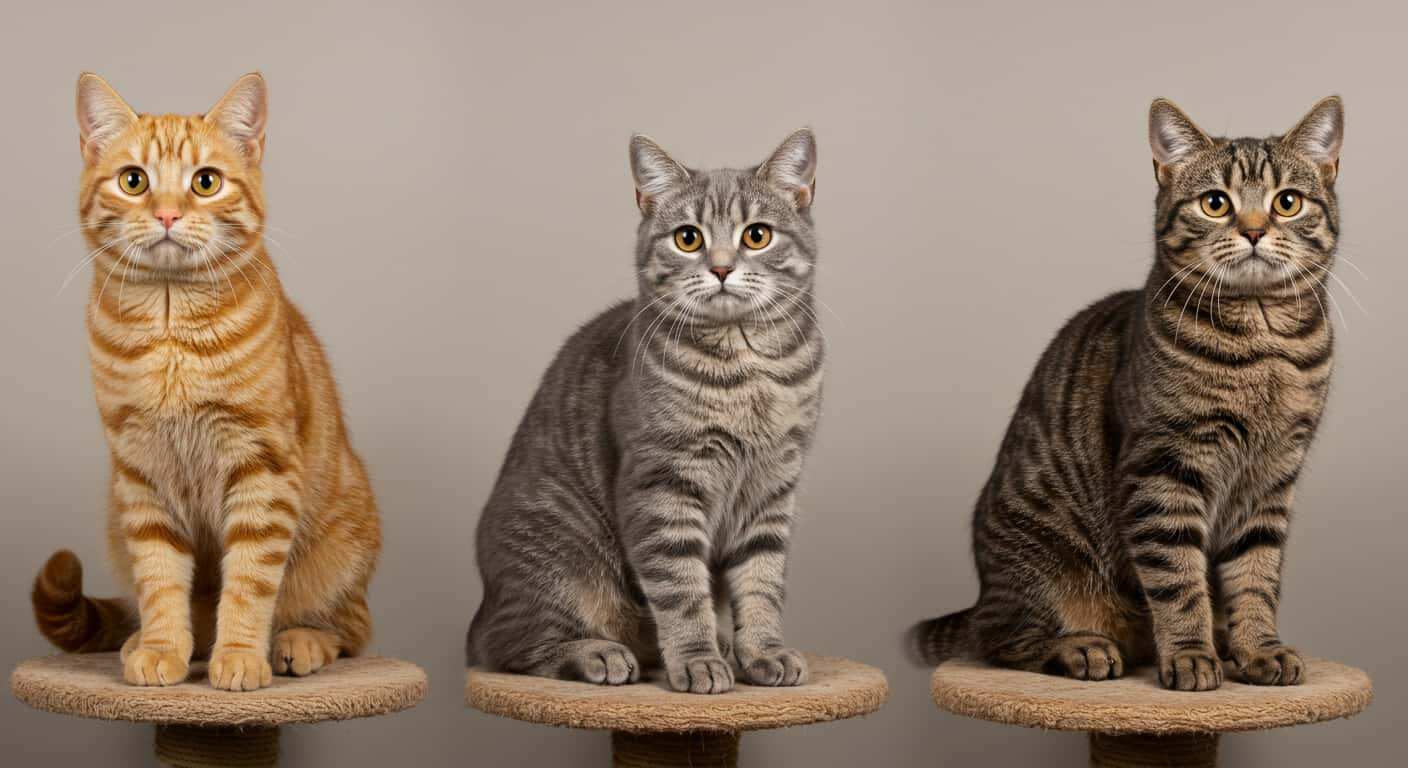
Tabby cats are often praised for their outgoing and playful nature. While personality varies by breed and environment, many exhibit bold curiosity and strong human attachment. A study from the University of South Australia found that coat pattern doesn’t determine behavior, but owners often associate tabby cats with being more sociable and expressive than solid-colored cats (McGreevy et al., 2017).
Quote:
“My tabby talks to me more than my partner does,” says Monica Ruiz, a long-time cat foster parent in Oregon.
Luna, a silver mackerel tabby, fits the bill. She’s vocal, curious, and absolutely insists on supervising every household chore, from making the bed to unpacking groceries.
Here’s a quick look at common tabby personalities, based on owner experiences and anecdotal observations.
| Tabby Color | Typical Personality Traits |
|---|---|
| Orange / Red | Outgoing, talkative, food-driven |
| Gray / Silver | Reserved, observant, independent |
| Brown / Black | Balanced, adaptable, loyal |
| Cream / Beige | Shy, gentle, cautious |
Though not backed by genetics, many cat lovers swear these trends hold true. Still, personality is more shaped by early socialization than fur color.
Check out the full guide to tabby cat personality to dive deeper into these quirks.
Understanding Tabby Cat Behavior Patterns
Habits, Instincts, and Feline Quirks
Tabby cats are smart, alert, and love routines. You’ll often find them investigating new objects, pawing at closed doors, or watching out the window for hours. Their behavior stems from their wildcat ancestry, where being alert and adaptable meant survival.
Common behaviors include
- Head butting (social bonding)
- Kneading (comfort behavior from kittenhood)
- Sudden sprints or “zoomies” (excess energy release)
- Chirping at birds or squirrels (hunting instinct)
A study published in Applied Animal Behaviour Science (Vitale Shreve & Udell, 2015) found that most domestic cats, including tabbies, display stronger bonding when they initiate contact with their owners, as seen in affectionate actions like tail wrapping and face rubbing.
Quote:
“The more I ignore Luna, the more she insists on being noticed. She’ll tap my leg, then run and look back, like she’s playing tag,” says her owner, Jake.
These intelligent cats benefit from mental stimulation. Puzzle feeders, rotating toys, and window perches help keep boredom at bay.
Why Some Tabbies Love Water
Although many cats avoid water, some tabby cats are fascinated by it. Luna, for example, waits near the faucet just to paw at the water stream. This behavior may be inherited from water-loving breeds like the Bengal or Turkish Van.
Why tabbies may enjoy water
- The motion mimics prey behavior
- Curiosity and sensory exploration
- Learned attention-seeking habit
A 2022 review in Veterinary Clinics of North America notes that feline water play often indicates high cognitive engagement and curiosity, especially in indoor cats with high energy.
If your cat isn’t interested, that’s normal too. Never force water play, and always offer safe, shallow access if they’re curious.
Learn more about managing tabby cat behavior problems with practical tips from feline behavior experts.
Complete Care Guide, Nutrition, Grooming & Health
Feeding a Tabby Cat: Age-Appropriate Diets
Feeding your tabby cat the right food at every life stage supports long-term health and energy. While tabby cats don’t require a special diet based on their coat, they still need a balanced feline diet tailored to their age, size, and lifestyle.
| Life Stage | Feeding Needs |
|---|---|
| Kittens (<1 yr) | High protein and fat for growth; feed 3-4 small meals per day |
| Adults (1-7 yrs) | Balanced protein with controlled fat; feed 2 meals a day |
| Seniors (7+ yrs) | Easy-to-digest protein, joint support ingredients, and smaller, softer kibble |
Always ensure access to clean, fresh water, especially if feeding dry kibble. Luna, now 5 years old, eats a mix of high-protein wet food and fiber-rich kibble. She also drinks more water since we added a cat fountain, which encourages hydration.
Looking for inspiration? Try our complete tabby cat diet and nutrition guide to plan healthy, life-stage-specific meals.
Grooming Essentials for Every Tabby Coat
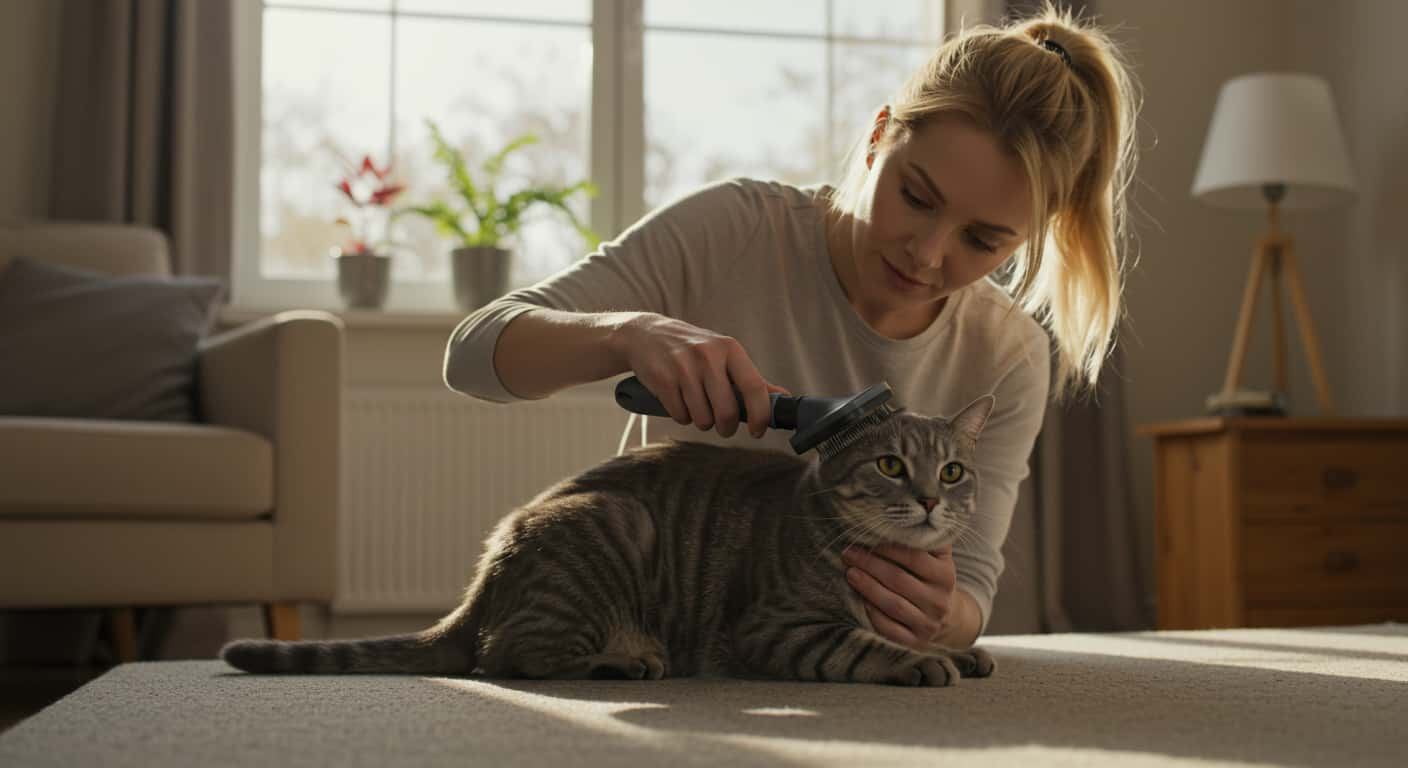
Grooming isn’t just about beauty, it’s vital for your cat’s skin and coat health. Tabby cats can have short or long fur, depending on breed. The grooming frequency depends more on coat length than pattern.
Key grooming tools
- Slicker brush: great for short-haired tabbies
- Dematting comb: essential for long-haired or senior cats
- Cat-safe wipes: for gentle ear and paw cleaning
- Nail trimmers: clip every 2-3 weeks
- Cat toothbrush: weekly dental hygiene matters
Suggested grooming routine
- Short-haired tabbies: Brush once a week to reduce shedding and hairballs
- Medium to long-haired tabbies: Brush 2-3 times per week to prevent tangles
- Senior tabbies: May need daily help grooming due to limited flexibility
Don’t miss our detailed tabby cat grooming guide for pro tips on brushing, deshedding, and bathing.
Luna enjoys being brushed, she purrs and even rolls over when she sees the slicker brush. But she hates baths, so we only use cat wipes unless it’s absolutely necessary.
Health Risks and Preventive Care
Tabby cats aren’t genetically predisposed to health issues because of their coat, but their breed background and environment play a big role in health outcomes.
Common feline health concerns
- Obesity (especially in indoor cats)
- Dental disease
- Kidney and liver conditions
- Parasites (especially fleas and worms)
- Urinary tract infections
Want to prevent these problems? Regular vet visits, proper nutrition, and mental stimulation are key.
Don’t miss our guide to tabby cat health issues for symptoms, prevention tips, and vet-recommended treatments.
Luna had mild gingivitis at age three, but daily brushing and dental treats helped reverse it. Your tabby can thrive, too, with a consistent care routine.
Supporting Senior Tabby Cats
Senior tabby cats may slow down but still offer affection and companionship. Aging cats often need special diets, more frequent vet checkups, and grooming assistance.
Tips for caring for senior tabby cats
- Provide orthopedic beds and soft surfaces
- Use shallow litter boxes for easy access
- Feed softer, easy-to-digest food
- Add joint supplements like glucosamine
- Monitor for signs of arthritis or appetite changes
Discover great ideas like our senior tabby cat care checklist to help your older cat live comfortably and happily.
Luna isn’t a senior yet, but she already enjoys her heated bed in winter and appreciates extra brushing around her hips, especially after long naps.
Types of Tabby Cats -Patterns and Breeds
Recognizing Tabby Coat Patterns
Tabby cats come in a variety of distinct coat styles, each with unique markings and history. These patterns aren’t just pretty, they’re tied to your cat’s genetics. Understanding what type of tabby you have can help you better predict grooming needs, energy levels, and breed traits.
There are five main types of tabby patterns, each visually and genetically different.
| Pattern | Appearance | Common Breeds |
|---|---|---|
| Classic | Swirled, marble-like shapes | American Shorthair, Maine Coon |
| Mackerel | Vertical, narrow stripes like tiger stripes | Domestic Shorthair, Bengal |
| Spotted | Dotted or oval spots | Bengal, Egyptian Mau |
| Ticked | Speckled or “salt-and-pepper” appearance | Abyssinian, Somali |
| Patched | Mix of tabby and tortoiseshell | Usually female cats, especially calicos |
Most tabby cats also have the signature “M” marking on their foreheads, a trait believed to be inherited from their wild ancestors. Luna, for instance, is a mackerel tabby with well-defined tiger-like lines down her sides and the distinct “M” that always gets compliments from visitors.
No matter the pattern, each tabby coat tells a visual story of feline evolution, camouflage, and uniqueness.
Popular Cat Breeds with Tabby Markings
While “tabby” isn’t a breed, many cat breeds naturally carry tabby coat patterns. In fact, the tabby gene appears in all domestic cats, though it may be masked in solid-colored coats.
Here are some popular breeds that often showcase stunning tabby patterns:
Maine Coon
Known for their size and gentle nature, Maine Coons often have bold, shaggy tabby coats and bushy tails. Their classic tabby pattern enhances their wild look.
Abyssinian
This breed typically displays a ticked coat pattern. Each hair is banded with multiple colors, creating a smooth, shimmering effect.
Bengal
Bengals are famous for their spotted or marbled tabby coats. Bred from Asian leopard cats, they often look like tiny jungle predators.
American Shorthair
These sturdy, adaptable cats frequently wear classic or mackerel tabby markings. They’re a great match for families due to their friendly nature.
Oriental Shorthair
With their sleek bodies and large ears, this breed can showcase all types of tabby patterns, from spotted to striped.
It’s worth noting that many shelter cats are mixed breeds with stunning tabby coats. Whether purebred or not, tabby cats bring variety and visual flair to homes everywhere.
If you’d like to explore how these patterns link to specific cat temperaments, check out our personality types in tabby cats guide for a breed-by-breed breakdown.
Tabby Cats and Human Bonding – Emotional Intelligence
Why Tabby Cats Make Great Companions
Tabby cats don’t just win hearts with their appearance, their emotional intelligence is what keeps them in our lives. Known for forming strong bonds with humans, tabby cats often display behaviors that suggest a deep emotional awareness. They follow their humans from room to room, vocalize during emotional shifts, and seek physical closeness during quiet or tense moments.
A 2019 study published in Current Biology by Dr. Kristyn Vitale found that over 65% of domestic cats form secure attachments to their owners, responding to their presence and absence in ways similar to toddlers. Tabby cats, with their interactive and observant nature, are frequently described as intuitive and emotionally present.
“The more I watch my tabby, the more convinced I am she’s reading the room better than I do.”
Emily R., cat owner and therapist
Luna, for example, becomes visibly calmer when her human is upset. She quietly joins them on the bed, pressing close without demanding attention. It’s not dramatic, but it’s deeply felt.
Tabby Cats as Emotional Support Animals (ESAs)
Tabby cats naturally offer comfort, routine, and gentle interaction, all of which contribute to emotional wellness. This makes them ideal emotional support animals, especially for people facing anxiety, depression, PTSD, or social isolation.
Unlike service animals, ESAs don’t need specific training. What matters is their ability to provide emotional relief and stability. With their social instincts and adaptability, tabby cats often meet these criteria effortlessly.
Here’s how tabby cats compare to other common emotional support animals in core qualities:
| Animal Type | Emotional Sensitivity | Ease of Care | Adaptability | Bonding Style |
|---|---|---|---|---|
| Tabby Cat | High | Moderate | High | Quiet, physical closeness |
| Golden Retriever | Very High | High | Medium | Energetic, loyalty-driven |
| Rabbit | Medium | High | Low | Gentle but timid |
| Parrot | Medium | Low | Medium | Verbal interaction |
| Miniature Pig | High | Low | Medium | Playful, social intelligence |
Tabby cats are particularly beneficial for those who:
- Prefer low-maintenance pets
- Live in small spaces like apartments
- Seek a calming presence rather than high activity
- Want a routine-focused, emotionally stable companion
“For people with anxiety, the consistent companionship of a tabby cat can ground the nervous system. Their purring alone can reduce cortisol levels.”
Dr. Kelly Thompson, Feline Behavior Researcher, University of Washington
Real-Life Connection: Luna the Comfort Cat
Luna, like many tabby cats, doesn’t need to do much to provide emotional support, she simply shows up. During difficult moments, she sits nearby, makes soft eye contact, and occasionally places a paw on her owner’s arm. She doesn’t interrupt; she observes and comforts without asking for anything.
This kind of non-verbal emotional awareness is common in tabby cats. They often act like quiet companions rather than active entertainers. For people navigating grief, stress, or burnout, that kind of presence is priceless.
If you’re wondering whether a tabby cat could support your emotional well-being, don’t miss our full guide on why tabby cats make excellent emotional support animals.
Common Myths and Misconceptions About Tabbies
Myth vs. Fact: What People Get Wrong About Tabby Cats
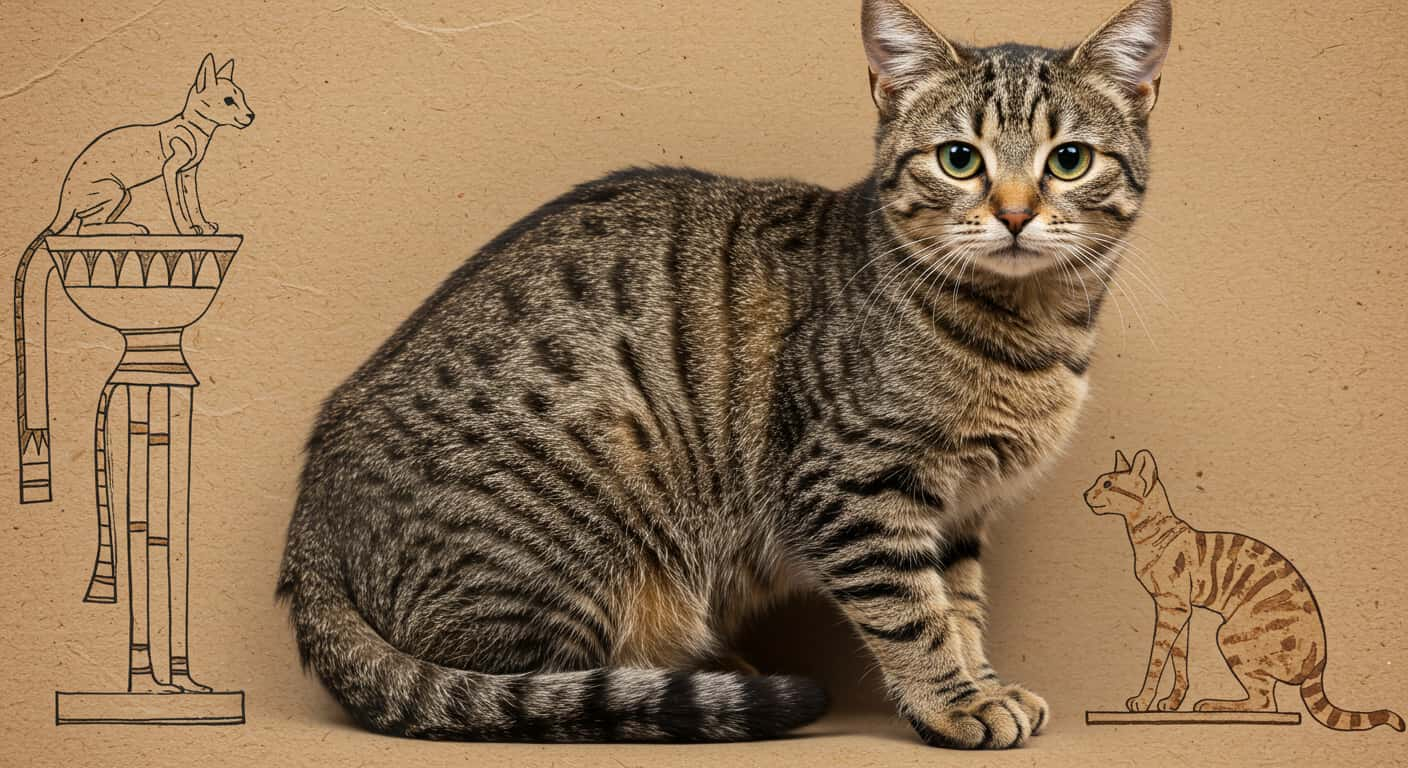
Despite being among the most popular and recognizable felines, tabby cats are often misunderstood. Let’s bust some of the most common myths that still circulate in pet communities and online forums.
| Myth | The Truth |
|---|---|
| All tabby cats are male | False. Tabby is a coat pattern, not a sex-linked trait. |
| Tabby is a breed | False. It’s a pattern found in many breeds and mixed-breed cats. |
| Orange tabbies are always affectionate | Not always. Personality is shaped by environment and breed, not color. |
| All tabbies look the same | Incorrect. There are five main patterns: classic, mackerel, spotted, ticked, and patched. |
| Tabbies are more aggressive | No. Behavior varies by individual cat, not coat pattern. |
Are All Tabbies Male?
This is one of the most widespread tabby myths. People often assume that if a cat is orange or ginger with stripes, it must be male. This confusion stems from genetics: about 80% of orange tabby cats are male, due to how the orange gene is carried on the X chromosome.
However, the tabby pattern itself is not gender-specific. You’ll find male and female tabby cats in every pattern, classic, mackerel, spotted, or ticked.
“Tabby cats come in all sexes and sizes. It’s time we stopped labeling them based on fur color alone.”
Janet Lee, Certified Cat Behavior Consultant
Luna, a female gray mackerel tabby, is proof of that. While many expect female cats to be aloof, Luna is affectionate and talkative, defying stereotypes.
Is Tabby a Breed or Just a Pattern?
Another major misconception is that tabby cats belong to a specific breed. In truth, tabby is a coat pattern, not a breed designation. It appears across many cat breeds, including Maine Coon, Bengal, Abyssinian, and American Shorthair.
Even solid-colored cats can carry the tabby gene. In some lighting or with age, you might notice faint stripes or spots revealing their hidden genetics.
Understanding this helps in selecting a cat based on temperament, grooming needs, and health considerations, not just pattern. Whether you’re adopting or buying, remember that a tabby’s pattern tells you how they look, not how they behave.
Want to go deeper into feline folklore and facts? Discover great ideas like Tabbies in Culture & Myth: A Historical Look and how patterns influenced ancient beliefs about cats.
Indoor vs Outdoor Life for Tabby Cats – Pros and Cons
Should Tabby Cats Stay Indoors?
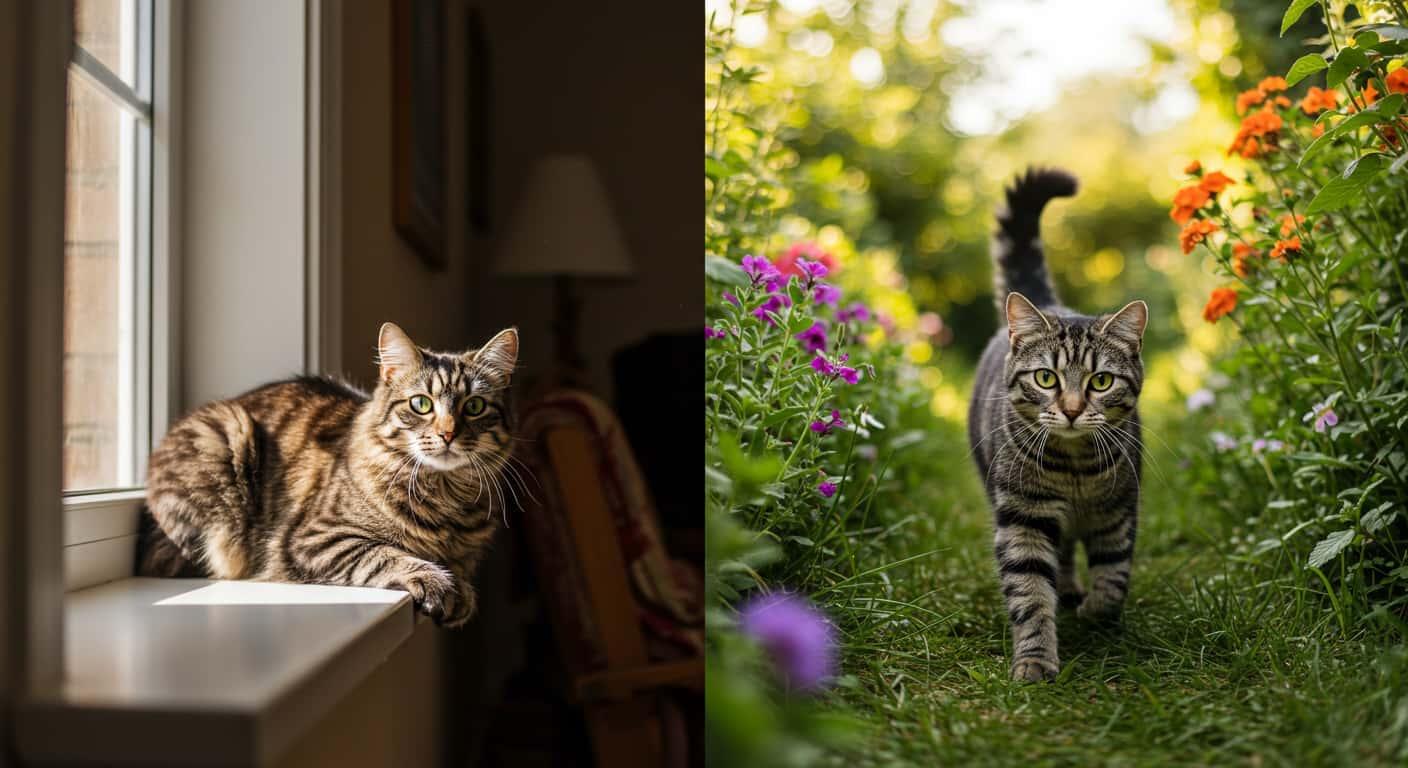
A common question among cat owners is whether tabby cats are happier indoors or outdoors. While it might seem natural to let your cat roam free, outdoor life comes with serious risks. Studies show that indoor cats live 3-5 times longer than their outdoor counterparts, primarily due to reduced exposure to traffic, predators, and disease.
Tabby cats, like all felines, benefit from safety and routine. They are highly adaptable and thrive indoors when provided with enough stimulation.
Luna, for example, has never been outside unsupervised. Instead, she enjoys sitting in a window hammock and watching birds in the yard. She chirps, tail-twitches, and occasionally paws the glass, but she’s safe and engaged.
Here’s a comparison of the pros and cons:
| Living Style | Pros | Cons |
|---|---|---|
| Indoor | Safer, longer lifespan, controlled environment | Needs enrichment to avoid boredom |
| Outdoor | Natural hunting and exploration opportunities | Risk of injury, disease, poison, traffic, animal attacks |
| Hybrid (Catio) | Combines safety with stimulation, supervised time outdoors | Requires time and space investment |
Safe Ways to Let Your Tabby Experience the Outdoors
If your tabby cat seems restless or eager to explore, you can offer safe, enriching alternatives to outdoor roaming:
- Catios: These enclosed outdoor patios allow cats to experience fresh air without risk.
- Window perches: Let your tabby bird-watch and sunbathe from inside.
- Harness training: Yes, some tabby cats can walk on a leash with patience and the right harness.
- Pet strollers: A fun way to take your cat for a walk without ever letting them touch the ground.
- Screened porches: Great for ventilation, smells, and supervised lounging.
“Cats don’t need to go outside to be fulfilled. They just need stimulation, structure, and a sense of territory.”
Dr. Sarah Greene, DVM, Feline Wellness Expert
Luna’s favorite outdoor time comes from her catio, which is attached to the kitchen window. She gets sunshine, bird sounds, and a breeze, without the danger.
With a little creativity, you can give your tabby the best of both worlds.
Choosing and Living with a Tabby Cat
Is a Tabby Cat Right for You?
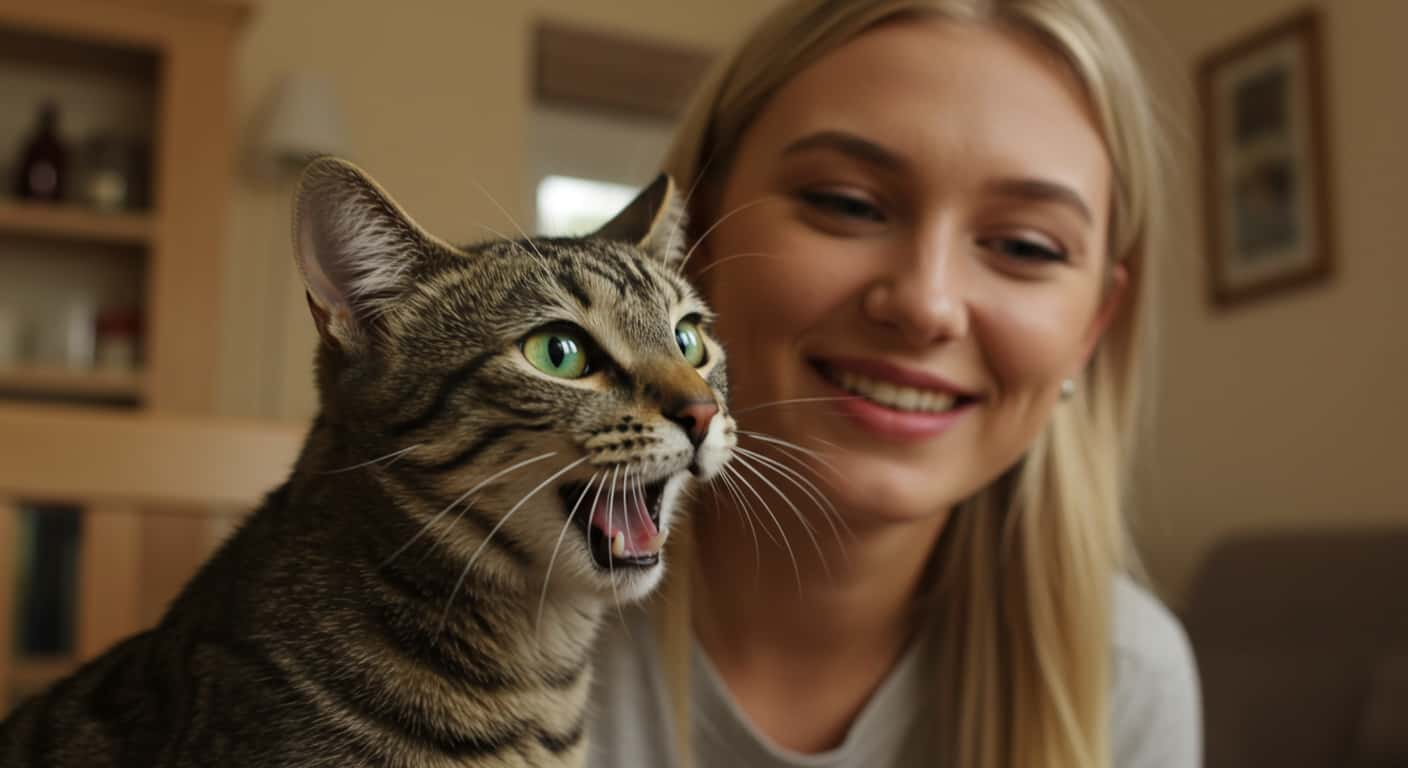
Tabby cats make excellent pets for nearly every type of household. Whether you’re a busy professional, a family with kids, or someone looking for quiet companionship, there’s a tabby out there that fits your lifestyle.
Thanks to their social, adaptable nature, tabby cats are especially good for first-time cat owners. Their intelligence and emotional awareness make them easy to bond with, while their curiosity keeps life interesting.
Here are a few things to consider before adopting:
- Your schedule: Tabbies love interaction. If you’re home often, they’ll appreciate the company.
- Your space: Even in small apartments, tabbies thrive with vertical shelves, toys, and window views.
- Grooming needs: Short-haired tabbies are low-maintenance, while long-haired ones may need brushing several times a week.
- Kitten vs. adult: Kittens require training and supervision. Adults often settle in more quickly and show their true personality from day one.
- Adoption or breed-specific: While tabby-patterned breeds like Bengals or Maine Coons are beautiful, many incredible mixed-breed tabby cats are waiting in shelters.
Luna came from a rescue and adapted to her new home within a week. She was already litter trained, healthy, and incredibly affectionate. Her playful, gentle nature made her an ideal fit for a quiet home with lots of one-on-one attention.
The Joy of Living with a Tabby Cat
Owning a tabby cat is a journey filled with surprises, routines, and strong emotional bonds. These cats often become more than just pets, they become part of the family.
What makes living with tabby cats so rewarding?
- They’re emotionally aware: Many tabbies respond to your mood and show up when you need them most.
- They’re playful and interactive: You’ll never be bored with a tabby in the house.
- They’re unique: Each one has a different coat pattern, voice, and personality.
- They form habits with you: From wake-up calls to bedtime cuddles, they thrive on shared rituals.
“Luna changed our home life completely. She brings calm, joy, and a sense of rhythm we didn’t even realize we were missing.”
Luna’s owner, Portland, OR
If you’re ready to open your heart and home, there’s a good chance a tabby cat is the perfect match. Check your local shelter, you might just meet your Luna.
Frequently Asked Questions About Tabby Cats
Are tabby cats friendly?
Yes, tabby cats are generally known for their friendly and social nature. They tend to enjoy human interaction and often form strong bonds with their owners. While personalities can vary, tabbies are frequently described as affectionate, curious, and playful.
Do tabby cats have health issues?
Tabby cats don’t face health problems unique to their coat pattern. However, like all cats, they can be prone to common feline issues such as dental disease, obesity, and kidney problems. Regular vet visits and a balanced diet can help keep them healthy.
Is a tabby a good cat for families?
Absolutely. Tabby cats are often great with kids and adapt well to busy households. Their playful energy and gentle demeanor make them a favorite among families, especially those looking for an interactive pet.
What’s the difference between a tabby and a regular cat?
It is not a breed but a coat pattern. Any cat, purebred or mixed, can be a tabby if it has the characteristic stripes, swirls, or spots, often with an “M” shape on the forehead. “Regular cat” usually refers to mixed-breed domestic shorthairs, many of which are tabbies.
Do all tabby cats have an ‘M’ on their forehead?
Most of them do. The iconic “M” marking is one of the most recognizable features of the tabby pattern. It forms naturally due to the distribution of pigment and fur direction on the cat’s forehead.
Is a tabby cat a breed or a type?
No, it is not a breed. It refers to a coat pattern, striped, spotted, or swirled, seen in many cat breeds and mixed-breed cats. Breed traits, not tabby patterns, influence behavior and care needs.
Fun & Fascinating Facts About Tabby Cats
Tabby cats aren’t just adorable, they’re full of history, mystery, and pop culture moments. Here are a few things you might not know about them:
- All domestic cats carry the tabby gene, even solid-colored cats may reveal faint stripes when seen in sunlight or as they age. The tabby pattern is embedded deep in feline genetics.
- Abraham Lincoln had several tabby cats in the White House. He was known to dote on his pets, and one of them, named Tabby, was said to be his favorite.
- Freddie Mercury’s cat Delilah was a beloved tabby. He even wrote a song about her on Queen’s final album, Innuendo.
- Tabbies are featured in ancient Egyptian art. Historians believe they were among the earliest cats to be domesticated due to their resemblance to the African wildcat (Felis lybica).
- Tabby cats were favored during the Black Plague for their rat-hunting skills. Their striped coats helped them blend into alleyways and fields, making them more effective hunters, and more likely to be welcomed by superstitious villagers who saw the “M” on their foreheads as a divine blessing.
If you’re considering adopting or learning more about life with a tabby, remember: every stripe tells a story, and every tabby cat is truly one of a kind.
